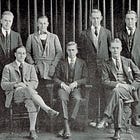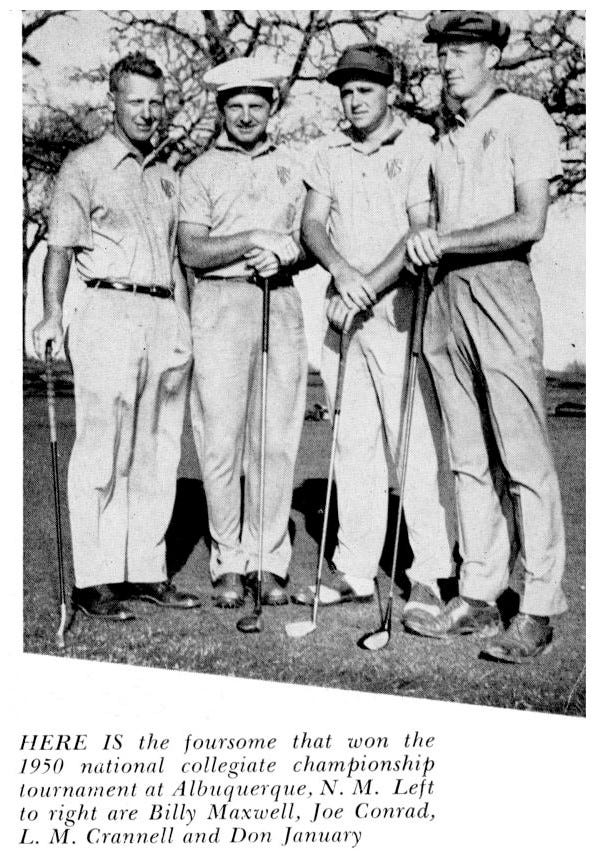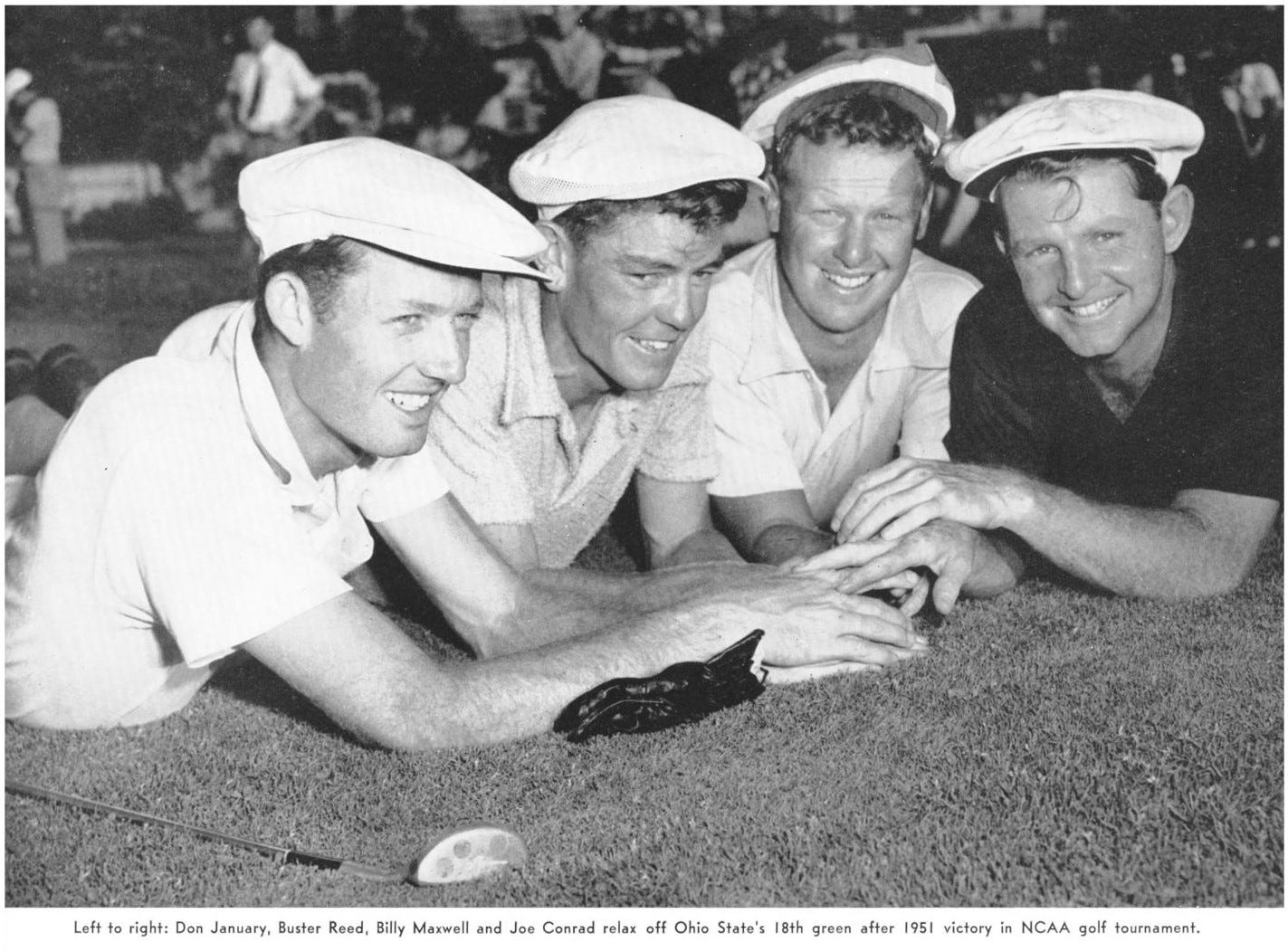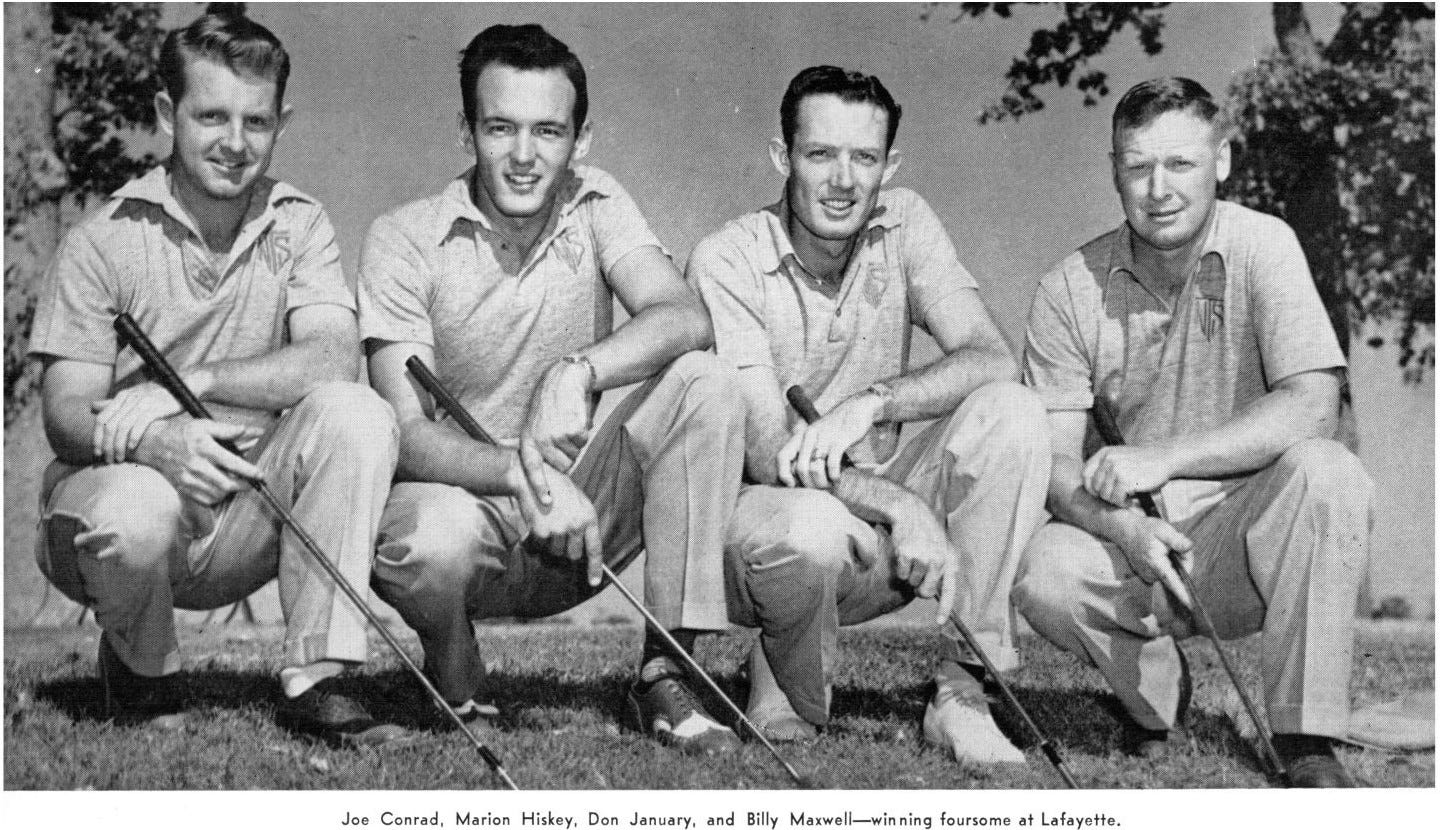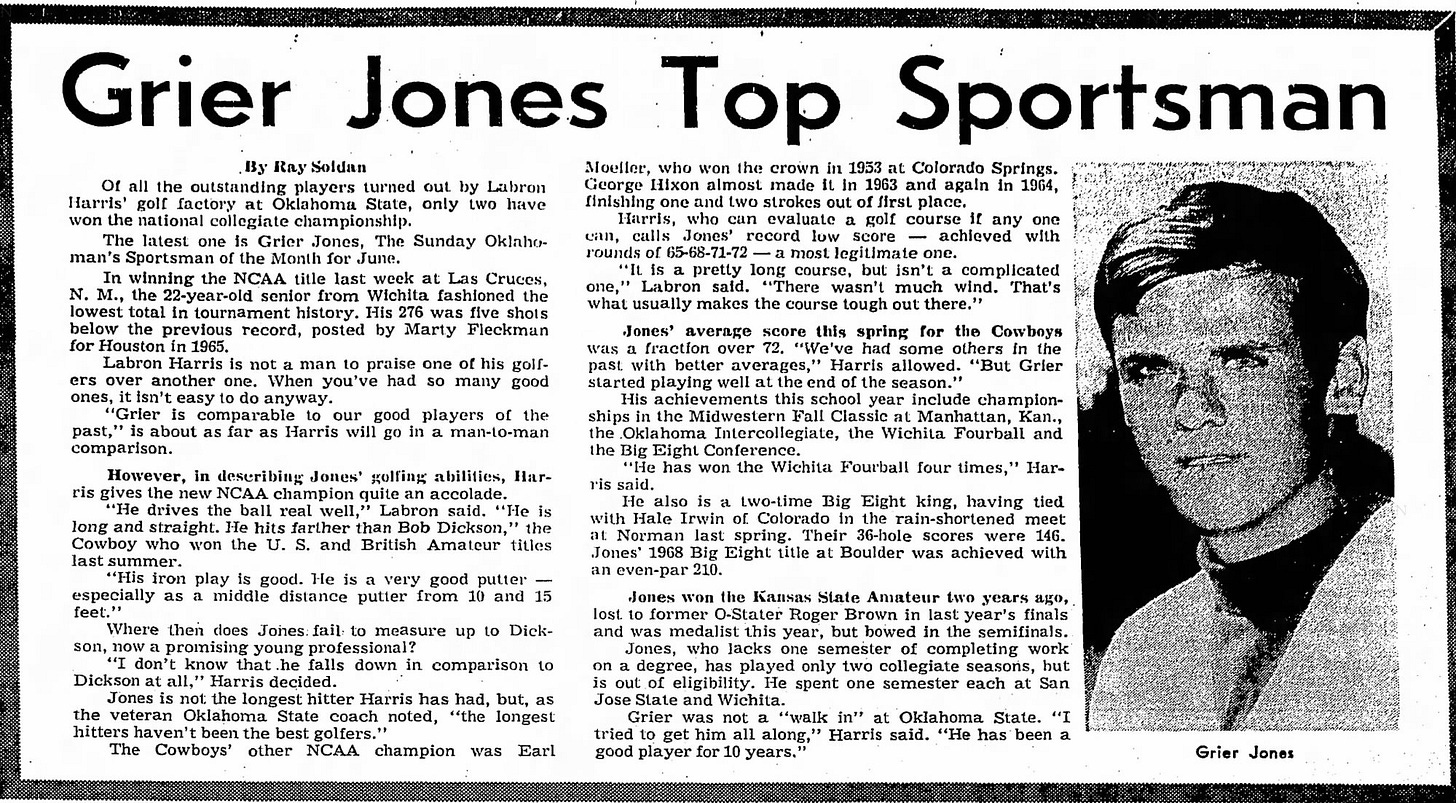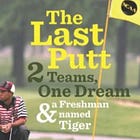Quick 9: Impactful Transfers
The transfer portal is a hot topic in collegiate sports right now, including college golf. That got us thinking about what historic transfers had an impact on the sport. It may not be surprising how many there have been over the years, but you might be surprised by how far back they go and just how impactful some transfers truly were!
Won’t you join me for a quick 9?
*NOTE: underlined text provides a link to references or sites with more information
1. The First College Golf Transfer(s)?
We begin on a hole which is actually the story of two transfers, although only one looks to be purely college golf related. Prior to World War I, several universities such as Michigan, Chicago, and Illinois got together to form the “Western” version of the Intercollegiate Golf Association (IGA) which was running college golf and had limited membership.
After Illinois joined the IGA and debuted in the 1915 championship, their captain Howard Walton transferred to the University of Pennsylvania (Penn) for what appears to be academic reasons. Shortly after, that vacancy was filled by Chicago’s top player - and WIGA champion - Joe McDonald. Therefore that 1916 championship featured what is believed to be the first golf-related transfer (McDonald) as well as the first player to compete in the championship for two different teams in their career (Walton).
Keep in mind this occurred 20 years after the very first championship and 23 years BEFORE the NCAA took over running the sport in 1939!
2. North Texas Gets a Trio of Titleists
The same year that Coach Fred Cobb led the North Texas State College (NTSC) to its first NCAA golf title (1949), the core of Eagles’ next three championships arrived on campus. Don January had transferred from Oklahoma A&M (later Oklahoma State) while Joe Conrad arrived from LSU. Billy Maxwell and his twin brother Bobby had both enrolled in SMU before following their friend Joe to Denton, Texas.
The three anchored the 1950 title team, beating out Purdue on New Mexico’s home course and dusting the previous 36-hole championship record. The next year they completed the three-peat on Ohio State’s Scarlet Course by beating out the host team by a single stroke thanks to a Don January 3-foot par putt on the final hole. The trio completed their own three-peat in 1952 at Purdue, giving NTSC four straight and securing dynasty status by completing a feat only previously achieved by Yale and Princeton.
3. Demon Kitten
Jay Sigel is widely considered to be one of the greatest amateur golfers in the post-Bobby Jones era, and his legacy is tied closely with Wake Forest where he was the first ever recipient of the Arnold Palmer golf scholarship. But Sigel wasn’t always a Demon Deacon.
Shortly after winning the prestigious International Jaycee Junior tournament in August 1961, Jay Sigel spent half of his freshman year at Houston under legendary Coach Dave Williams. During the fall semester of the 1961-62 season, Sigel represented the Cougars on the freshman team - playfully referred to as the “Kittens” - team at such events as New Mexico’s long-running William H. Tucker Intercollegiate.
Newspaper accounts give a combination of reasons for Sigel choosing to leave UH for Wake Forest (including the one below), but the truth is that the Pennsylvania native had several connections to Arnold Palmer and it isn’t a complete surprise he would end up at Palmer’s alma matter under another legendary coach Jesse Haddock, even if there might have been a little wink-wink-nudge-nudge going on with the new scholarship.
4. Shocker in Stillwater
Pretty much everyone who plays golf in Kansas, especially around the Wichita area, knows the name Grier Jones. The Hall of Fame coach (Wichita State, 1995-2019) was one of the most talented amateurs from that area and went on to have a successful playing career in both college and the PGA Tour before putting away the clubs to coach.
Before joining Oklahoma State, Grier Jones actually spent one semester in San Jose State and another back home at Wichita State. In his interview with Coach McGraw for the latter’s Better Than I Found It podcast (below), Jones mentioned not being comfortable at SJSU, but clearly found windy Stillwater more to his liking. After sitting out the 1966 season, Jones had two successful seasons under Coach Labron Harris where he was the 2-time Big8 (co-)medalist and 1968 NCAA individual champ. Grier Jones’s golf talent is still revered at OSU to this day
5. Annika Comes to America
This one is admittedly a bit of a stretch as far as “transfers” go, however her impact cannot be denied. Either as a part of Stockholm University or else representing the Swedish National Team, the story goes that Annika Sorenstam was in Japan for the 1989 Shiseido Open where she had a chance encounter with Arizona Head Coach Kim Haddow who was impressed enough to recruit the shy phenom from Stockholm, Sweden. Now able to practice practically year-round, Sorenstam’s game quickly elevated to a new level in the Tucson heat. In her two years as a Wildcat, Annika Sorenstam won an NCAA individual title (1991), co-Player of the Year Award (1991), a Pac-10 individual title (1992), a Pac-10 team title (1992) an NCAA individual runner-up finish (1992), and NCAA team runner-up finish (1992), along with several other medalist finishes. The year she turned pro (1993), her sister Charlotta won the NCAA individual title while playing for Texas. After all she has done for golf, it’s fitting that the annual award to for the top female D1 collegiate golfer is named for (and presented by) Annika Sorenstam.
Check out around the 26:00 mark in the below podcast where Sorenstam relays the same story as this “Letter to My Daughter” where she states:
College for me was sort of pure luck. I was representing Stockholm University in a tournament in Japan and playing with a young girl from the University of Arizona [Martina Koch]. Her coach came up to me and said, “Hey, would you like to come play for us?”
6. Mike Holder Makes An Exception
Mike Holder didn’t take transfers in his first 20 years at the helm of Oklahoma State’s prestigious golf program, but he made one very key exception in 1993.
Trip Kuehne was one of the most recognized and accomplished recruits in the country when he signed with Arizona State to begin his collegiate career. There he was roommates with phenom Phil Mickelson who secured his record-tying third NCAA championship in 1992. Shortly afterwards, Mickelson turned pro and took ASU Coach Steve Loy with him.
Realizing Phoenix, Arizona was not longer the place for him, Kuehne joined his brother Hank in Stillwater, OK in the Fall of 1993. The Cowboys came achingly close to winning it all in 1994, only to watch Stanford take the title. The next season, Oklahoma State got their revenge by capturing the NCAA team title in the sport’s first championship team playoff against the Stanford Cardinal led by a freshman Tiger Woods. The night before the final round, Kuehne received an anonymous note telling him and his teammates to “Believe in Destiny,” a message they took to heart.
Trip Kuehne, the 1995 Ben Hogan Award winner, never did pursue pro golf and opted to remain an amateur instead.

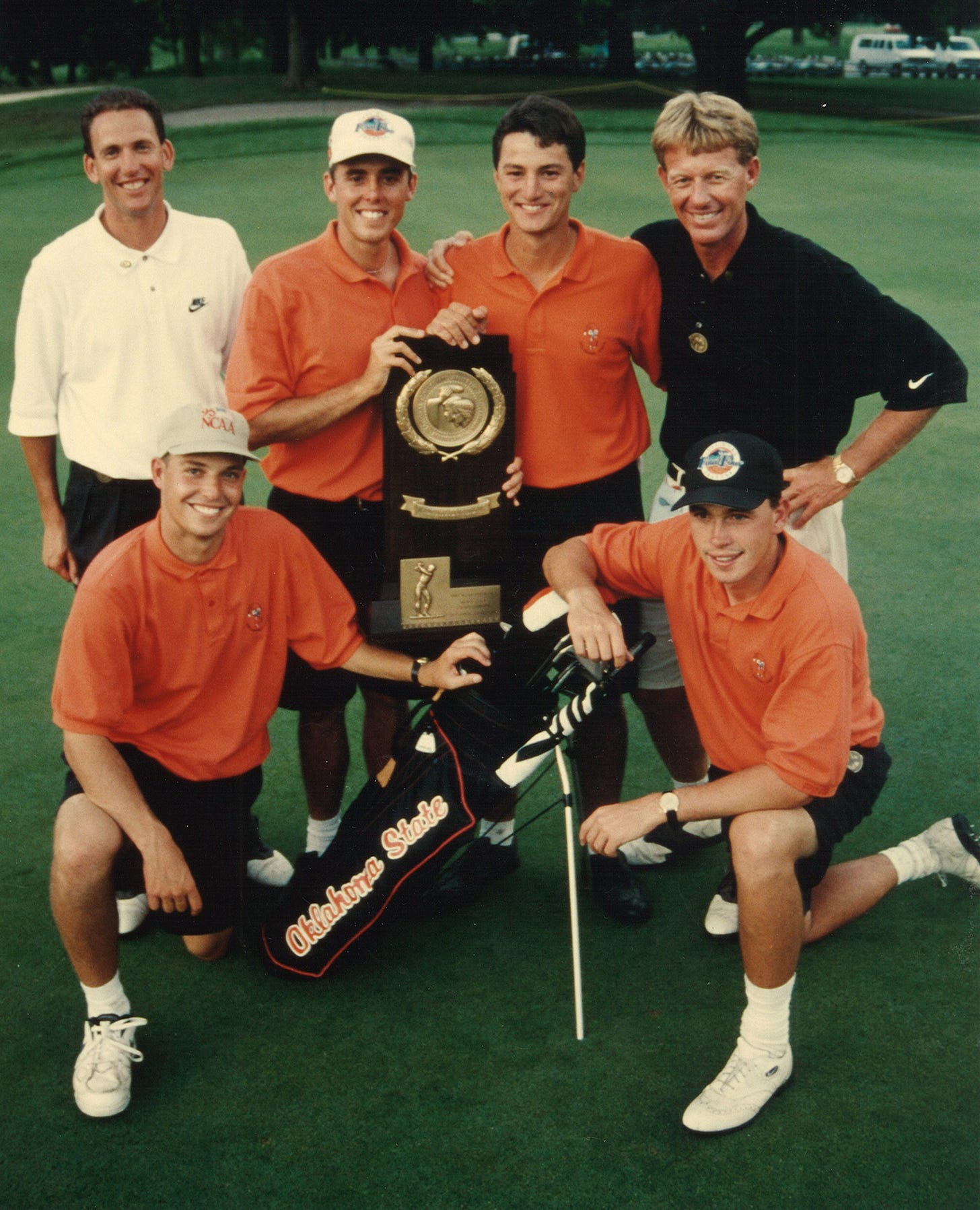
7. Pacific North-Lepp
James Lepp spent two seasons at the University of Illinois where he was the Big 10 Freshman of the Year in 2002 and Big 10 Player of the Year in 2003. Also in 2003, he had one of the best seasons in Illinois history, becoming just the second Illini to win Big 10 Player of the Year honors (Steve Stricker, 1988 & 89) and broke Stricker’s record for low season-long stroke average, winning the Les Bolstad Award in the process for leading the conference in that same category.
Lepp, a Canadian native, moved back to the Pacific Northwest for his final two seasons of college golf where he became a Washington Husky legend. His 2004-05 season was largely unremarkable, but he unlocked something special at the NCAA championship where he shot a course record 63/-7 to force a playoff against Michael Putnam [Pepperdine]. Three extra holes later, Lepp stood alone as Washington’s first individual champion. The next year he elevated his game to the point of becoming Golfweek’s 8th ranked player in the nation and even medaled at the US Amateur.
8. (Im)Perfect Reed
Patrick Reed didn’t leave the University of Georgia on good terms, but Coach Josh Gregory of Reed’s hometown Augusta (State) University chose to bring the troubled sophomore onto the team and was rewarded with championships. Even with (in spite of?) the baggage, Patrick Reed is undoubtedly one of the best NCAA championship match play golfers ever.
The 2009-10 Jaguar team, led by Henrik Norlander who finished T5 then went 3-0 in his matches, made a Cinderella run at the Honors Course for their first national title. Reed also went 3-0 in match play, defeating Chesson Hadley [Georgia Tech], Brooks Koepka [FSU], and Peter Uihlein [Oklahoma State].
Improbably, the Jags repeated the next year after making a similar match play run, first defeating Georgia Tech in a Quarterfinal rematch followed by host Oklahoma State in a rematch of last year’s Finals. In the 2011 Finals, Reed faced his former UGA teammates in a heated match that resulted in Augusta (State) becoming the first repeat champions since the 1984-85 Houston Cougars. Once again Patrick Reed - newly minted 1st Team All-American - went undefeated in his matches, besting James White [Georgia Tech], US Amateur champion Peter Uihlein [Oklahoma State], and Harris English [Georgia]. He is one of only 3 players - Viktor Hovland [Ok St] and Zach Wright [LSU] - who are undefeated in NCAA championship match play (2009-25) with a minimum of 6 matches played.
9. Cal-boys
The 2025 Oklahoma State Cowboys were a young team made up entirely of underclassmen. That made the experience, as little as it was, from Cal transfers Ethan Fang and Eric Lee invaluable.
The season really got started for OSU with their victory at the Jackson T. Stephens Cup, the team’s first win in an uncharacteristically long time (19 tournaments). That event is similar in format to the NCAA championships - 54-holes of stroke play followed by team match play Final - proved somewhat prophetic with Fang providing the clinching point. The Cowboys kicked it into high gear in the Spring with finishes no lower than 3rd and victories at the historic Amer Ari, Augusta Haskins, Mountaineer Invitational, Big 12 (their 12th!), and the Urbana Regional (their 17th!).
At the NCAA championship at La Costa, OSU gained the 4th seed behind Preston Stout’s 3rd place finish, Fang’s T15, and Lee’s T38. Their path through the match play bracket started with a Bedlam matchup against rival Oklahoma where Fang secured a point and Lee was tied before his match was dropped as the overall match was already decided. In their thrilling Semifinal match against Ole Miss, Lee sank the clinching putt in the near-darkness after his match went into extra holes. The Finals match against Virginia was much closer than the scoreboard makes it appear, with Lee once again sinking the clinching putt.
Leveraging the story from his own team title in 1995, Coach Alan Bratton got his 2025 team to “Believe In Destiny” and take home the program’s 12th national title. In doing so, they also became the first team in NCAA golf history to win a championship with all underclassmen!
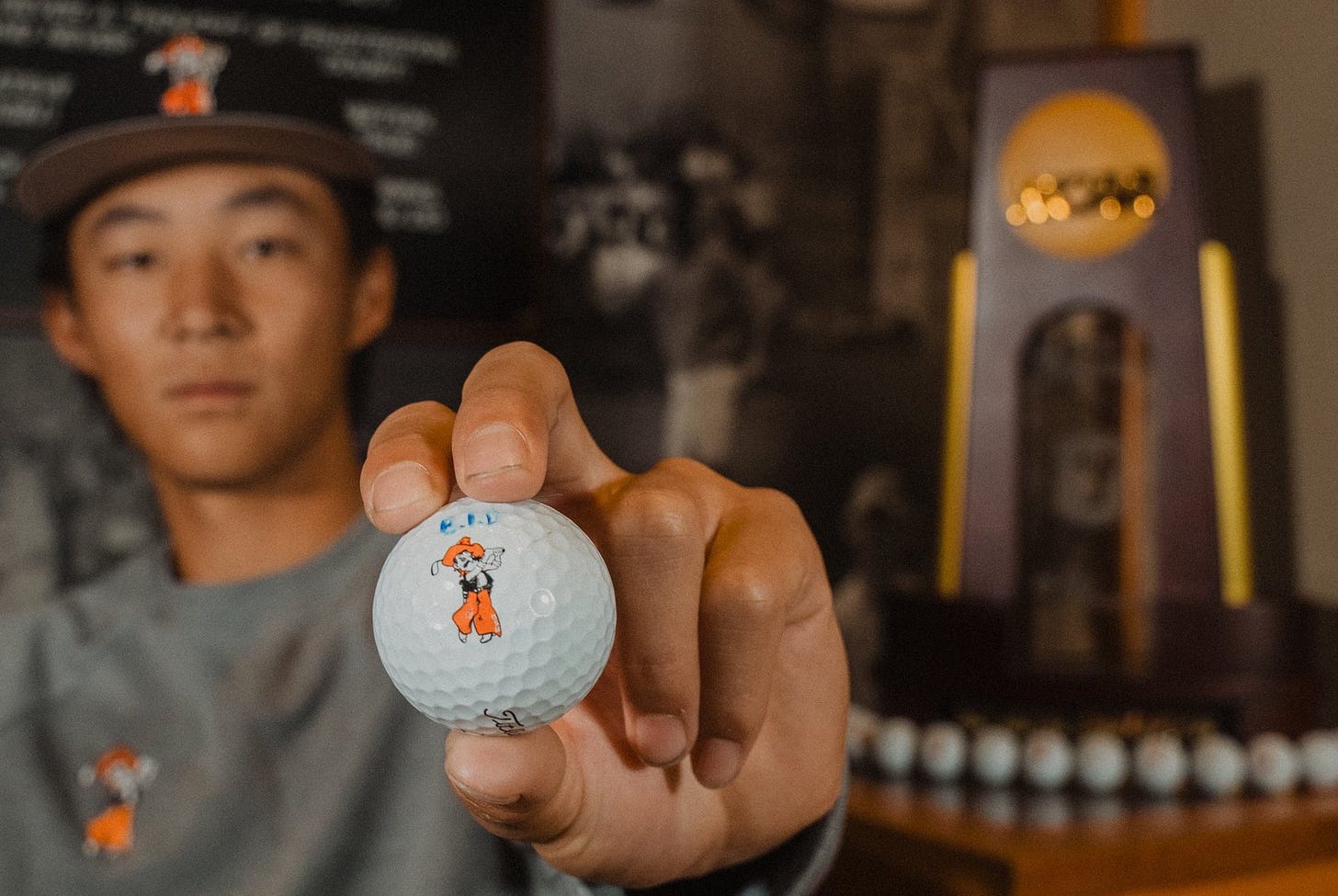
Thanks for reading! I’m thinking there are many more holes to play on this course. What are some other impactful transfers?





